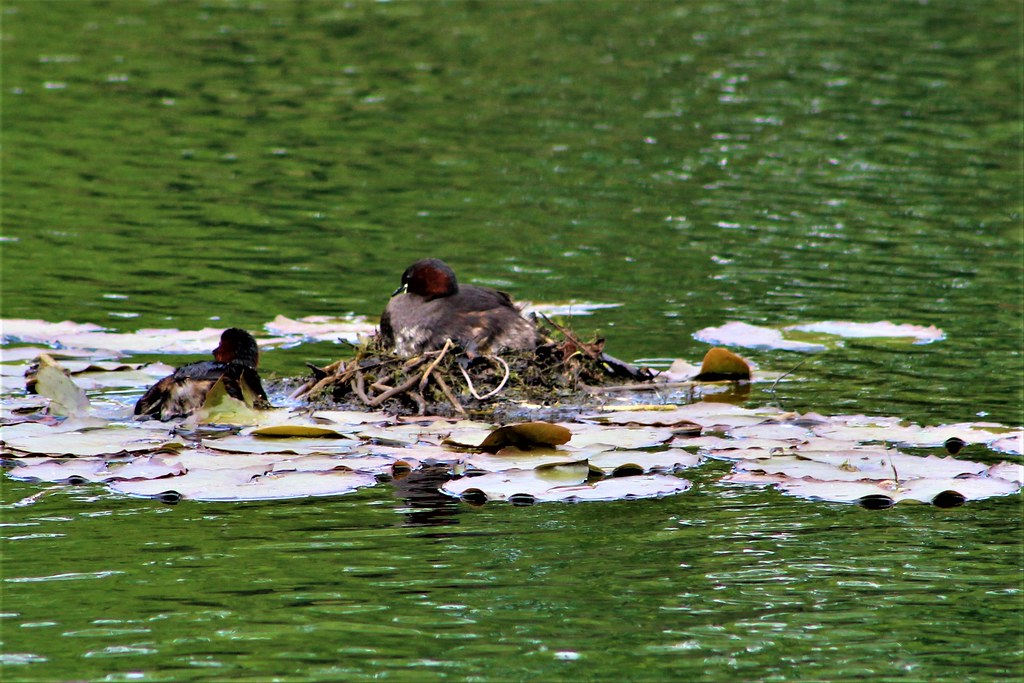Nesting Little Grebes
On my regular, daily walks I normally pass along the edge of a small lake upon which a couple of Little Grebes (water birds) have chosen to nest. I am following their progress with interest. Fortunately, the birds and their nest are well camouflaged resulting in no interference as most passers by are ignorant of their existence.Many people would require binoculars or a long lens to see the birds at all.
In past days just one of the birds was sitting on the eggs but today I was fortunate to witness the 'handover' of egg sitting to the other parent. The sequence of events is shown below.
Co-parent arrives to relieve sitter
Sitter prepares to leave
New sitter inspects nest which holds two (or possibly three) eggs.
New sitter begins to take up position.
I wish this pair well. They are relatively rare visitors to the lake which is home to populations of swans, ducks, geese, cootes and moorhens.
Here is key information on the Little Grebe species obtained from the RSPB (bird charity) website.
The little grebe is a small, dumpy grebe which often appears to have a 'fluffy' rear end. It readily dives when disturbed, surfacing unseen some distance away. In summer it has a bright chestnut throat and cheeks and a pale gape patch at the base of the bill. It can be noisy, with a distinctive whinnying trill.
What they eat:
Insects, larvae and small fish.
Measurements:
- Length:
- 25-29cm
- Wingspan:
- 40-45cm
- Weight:
- 100-140g
Population:
- UK breeding:
- 5,300 pairs
- UK wintering:
- 16,000 individuals
- Further updates on the pair will follow if opportunity permits.
Identifying features:
This bird species has different identifying features depending on sex/age/season.





Comments
Post a Comment